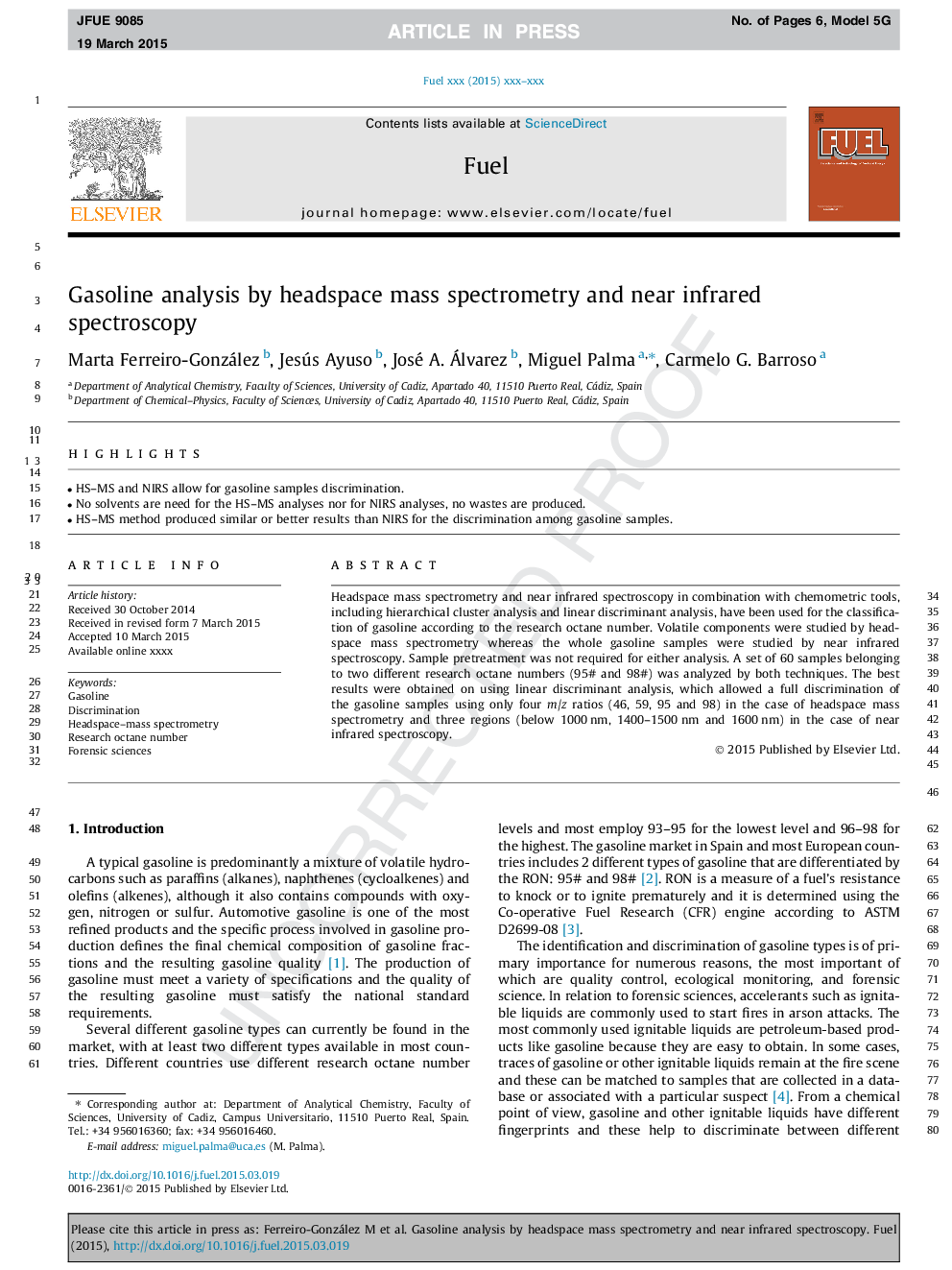| Article ID | Journal | Published Year | Pages | File Type |
|---|---|---|---|---|
| 6635603 | Fuel | 2015 | 6 Pages |
Abstract
Headspace mass spectrometry and near infrared spectroscopy in combination with chemometric tools, including hierarchical cluster analysis and linear discriminant analysis, have been used for the classification of gasoline according to the research octane number. Volatile components were studied by headspace mass spectrometry whereas the whole gasoline samples were studied by near infrared spectroscopy. Sample pretreatment was not required for either analysis. A set of 60 samples belonging to two different research octane numbers (95# and 98#) was analyzed by both techniques. The best results were obtained on using linear discriminant analysis, which allowed a full discrimination of the gasoline samples using only four m/z ratios (46, 59, 95 and 98) in the case of headspace mass spectrometry and three regions (below 1000Â nm, 1400-1500Â nm and 1600Â nm) in the case of near infrared spectroscopy.
Related Topics
Physical Sciences and Engineering
Chemical Engineering
Chemical Engineering (General)
Authors
Marta Ferreiro-González, Jesús Ayuso, José A. Álvarez, Miguel Palma, Carmelo G. Barroso,
